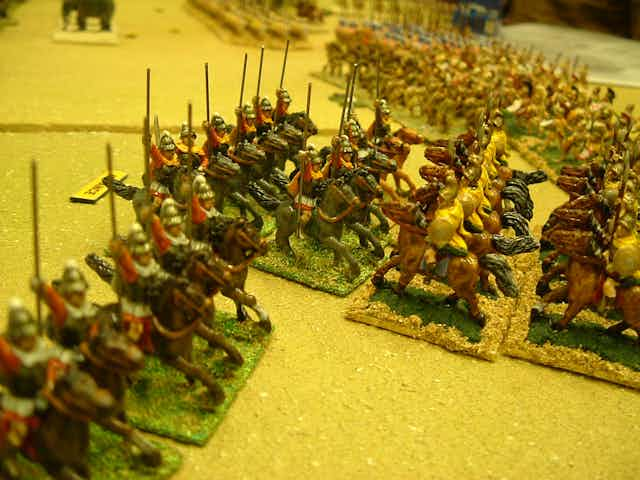According to British historian Arnold Toynbee, “History is just one damned thing after another.” Or is it? That is the question Peter Turchin of the University of Connecticut in Storrs tries to answer in a new study just published in the Proceedings of the National Academy of Sciences. He and his colleagues show history may be deterministic, at least to a certain extent. Their computer simulations show that warfare may have been the main driver behind the formation of empires, bureaucracies and religions.
Historians may be a bit leery about scientists making this sort of attempt, since history is driven by a complex set of of events, some of them seemingly one-time only. But Turchin thinks otherwise. Through an approach he calls cliodynamics (named after Clio, the Greek muse of history), he wants to unravel the past by testing hypotheses against data.
For his latest work, he joined with Thomas Currie, a lecturer in cultural evolution at the University of Exeter. In the new study, they use a computer simulation to model the largest societies in the years between 1500 BCE and 1500 CE.
Their model uses a map of Africa and Eurasia split up into cells that are 100 kilometres on each side. The properties of each cell are its natural landscape, height above sea level and the possibility of agriculture (which was the main driving force behind societies). The borders are seeded with military technology, starting with the use of horses. That technology then spreads as societies fight it out virtually. What emerges is the probability that each cell of land could or could not be occupied by civilisations as time progresses.

“Remarkably, when the results from the simulation are compared with real data from the past, the model predicts the rise of empires with 65% accuracy,” Currie said. If military technology is removed as a factor, the model’s accuracy falls to a mere 16%. “It seems warfare created intense pressure that drove these societies.”
Other researchers such as Jared Diamond and James Robinson have suggested, respectively, that agriculture and social institutions drove civilisations. They undoubtedly contributed, but Turchin and Currie argue that their results show that competition through warfare may have played a more important role.
Peter Richerson, emeritus professor at the University of California at Davis, studies cultural evolution and is impressed by cliodynamics. “It is early days yet, so the specific hypothesis tested here is liable to prove wrong or at least incomplete,” he said. “The model fails to predict the emergence of large empires in Central Asia. Something not in the current model is going on there.”
Currie agrees. “Our results are a good fit because of the broad scale. We are aware we are glossing over many complexities,” he said. Still, there is lots of potential value in building these models. The global database of historical events has many gaps. With efforts underway to grow these databases through all the information that historians, archaeologists and social scientists can find, the models are bound to get better.

